<< Previous | Displaying results 201-225 of 506 for "austria" | Next >>
Explore a timeline of key events during 1946-1948. Learn about the aftermath of the Holocaust and the obstacles survivors faced.
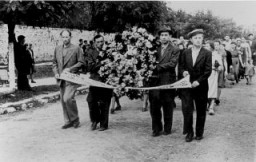
Brief overview of the charges against Baldur von Schirach, Hitler Youth leader and Nazi leader in Vienna, during the International Military Tribunal at Nuremberg.
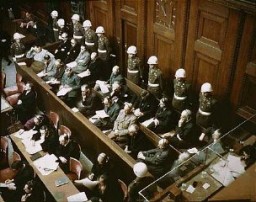
Brief overview of the charges against Arthur Seyss-Inquart, Reich Commissioner for the occupied Netherlands, during the International Military Tribunal at Nuremberg.

After WWII, many Holocaust survivors, unable to return to their homes, lived in displaced persons camps in Germany, Austria, and Italy. Read about Fürth DP camp.
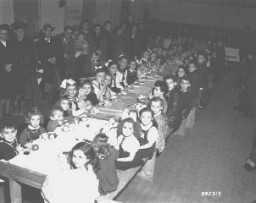
After WWII, many Holocaust survivors, unable to return to their homes, lived in displaced persons camps in Germany, Austria, and Italy. Read about Heidenheim DP camp.

After WWII, many Holocaust survivors, unable to return to their homes, lived in displaced persons camps in Germany, Austria, and Italy. Read about Leipheim DP camp.
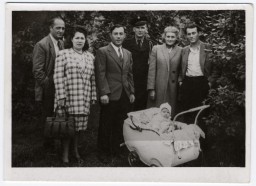
After WWII, many Holocaust survivors, unable to return to their homes, lived in displaced persons camps in Germany, Austria, and Italy. Read about Mariendorf DP camp.
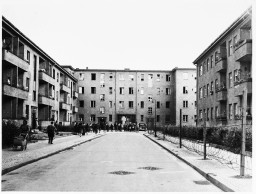
After WWII, many Holocaust survivors, unable to return to their homes, lived in displaced persons camps in Germany, Austria, and Italy. Read about Wetzlar DP camp.
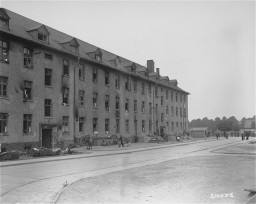
After WWII, many Holocaust survivors, unable to return to their homes, lived in displaced persons camps in Germany, Austria, and Italy. Read about Ziegenhain DP camp.
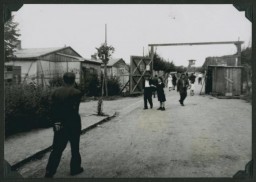
After WWII, many Holocaust survivors, unable to return to their homes, lived in displaced persons camps in Germany, Austria, and Italy. Read about Poking Pine City DP camp.
Arrival of Polish Jewish displaced persons in Vienna. They were sheltered at the Rothschild Hospital displaced persons camp. Vienna, Austria, 1946.
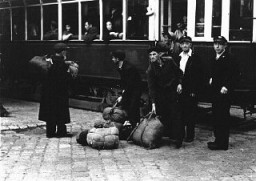
Soviet tanks roll down a street in Vienna during the Soviet conquest of the Austrian capital at the end of World War II. Photograph taken by Yevgeny Khaldei. Vienna, Austria, 1945.
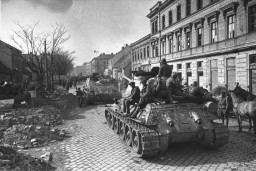
Soviet troops trample a Nazi flag as they march past a burning house on a street in the outskirts of Vienna. Photograph taken by Soviet photographer Yevgeny Khaldei. Vienna, Austria, April 1945.
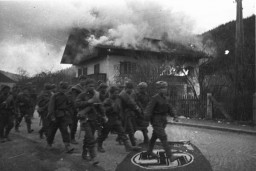
Salek Liwer (center) with friends at a Dror Zionist youth movement seminar in the Bad Gastein displaced persons camp in Austria, 1946.
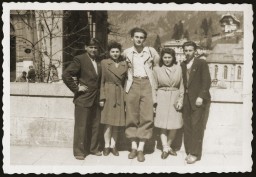
After World War II, the Rothschild hospital in Austria was primarily concerned with the rehabilitation of sick displaced persons. It also served as a lager for political prisoners and as a hostel for 600 refugees.
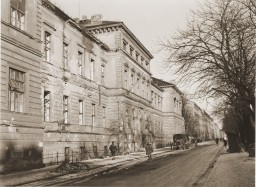
During World War II, Slovene general Leon Rupnik collaborated with the forces of Fascist Italy and Nazi Germany. Rupnik was appointed president of the Provincial Government of the German-occupied Province of Ljubljana in 1943. He was convicted of treason and executed in 1946. In 2020, his sentence was annulled on a technicality.
Listing of the 24 leading Nazi officials indicted at the International Military Tribunal at Nuremberg. Learn about the defendants and the charges against them.
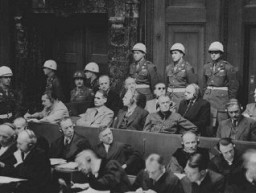
Leo was the oldest child and only son of Polish immigrants in Vienna. His father, a tailor and amateur Yiddish actor, died of an illness in 1930 when Leo was 9. His mother supported the family by working as an embroiderer; Leo helped out by looking after his two younger sisters. They lived in one of Vienna's large Jewish districts on the east side of the Danube Canal. 1933-39: Anti-Jewish sentiment escalated after Germany annexed Austria in 1938. Jewish men, including some of Leo's uncles and neighbors,…
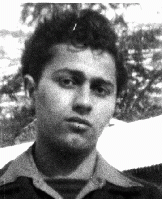
Learn more about the SS and the organization’s involvement in perpetrating the Holocaust.
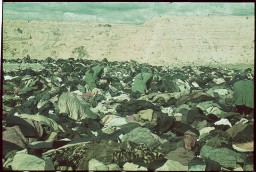
Charged with managing the mass deportation of Jews to ghettos and killing centers, Adolf Eichmann was a key figure in the "Final Solution."
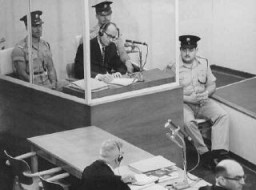
Learn about conditions and the treatment of prisoners in Ravensbrück, the largest concentration camp for women in the German Reich.
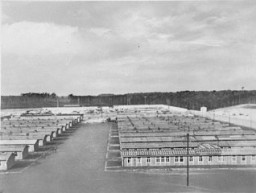
May 4, 1945. On this date, the US Army liberated Gunskirchen, a subcamp of Mauthausen in Austria.
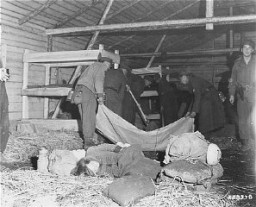
Learn about the provisions and impact of the 1919 Treaty of Versailles, including the "War Guilt Clause" which held Germany responsible for starting World War I.

Johann was born to Catholic parents in the part of Austria known as Carinthia, where he was raised on the family farm. Johann enjoyed acting and belonged to a theater group in nearby Sankt Martin, which also happened to have a Jehovah's Witness congregation. He became a Jehovah's Witness during the late 1920s, actively preaching in the district around Sankt Martin. 1933-39: Johann continued to do missionary work for the Jehovah's Witnesses even after this was banned by the Austrian government in 1936. The…
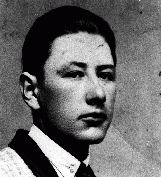
Frances Perkins was FDR's secretary of labor. Learn about her role in the rescue of European Jews whose lives were threatened by the Nazi regime.

We would like to thank Crown Family Philanthropies, Abe and Ida Cooper Foundation, the Claims Conference, EVZ, and BMF for supporting the ongoing work to create content and resources for the Holocaust Encyclopedia. View the list of donor acknowledgement.